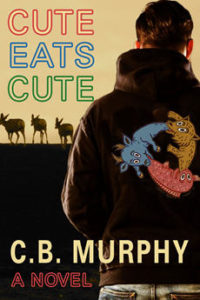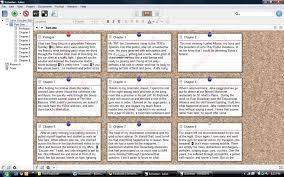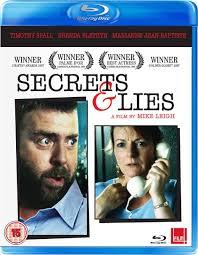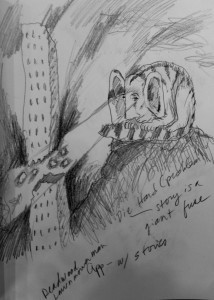C.B. Murphy's Blog, page 3
May 10, 2016
Cute Eats Cute: the deer problem keeps getting worse
Back when I wrote my early drafts of CUTE EATS CUTE, my writing coach at the time said, “You better get this out fast. This issue is probably going away soon.” In the months and years that followed, I have only seen the issue of “too many deer” increase its profile in the media. In other words: it ain’t going away.
But the real issue of my book is not just “the deer problem” but growing up in a world of highly opinionated (ahem, boomers) while trying to find your way. In the story, Sam’s parents span the entire spectrum of philosophy and politics making it tough for him to find a path not already overcrowded. While his mother is “anti deer hunt” she represents a more “spiritual” view of nature that isn’t necessarily what Sam’s peers relate to. On the other hand, while his father is “pro deer hunt” using the conservationist/hunter argument, he seems better informed on the problems associated with too many deer.
Then real world problems range from the more serious: collisions (often fatal to both) with humans in vehicles, outbreaks of lyme disease, irreparable damage to forests on the ecosystems of other animals, to the merely irritating—deer munching on our exotic plants. Since we have created a new ecosystem where the deer thrive with minor predation (cars and hunters) there is the issue of herd’s health. When there are too many deer they can starve in winter among other unpleasant outcomes.
One of the themes discussed in CUTE EATS CUTE is deer contraception. The issue remains pretty much where it was when I wrote the book. Anti-hunting groups it as a scientific and humane solution, but so far there isn’t an effective contraception method that is practical (and cost effective) in the field.
But I thought I’d take a moment to link to some of the most recent media flags about this problem and how it’s not going away.
February 23, 2016
Marketing as a Lifeboat
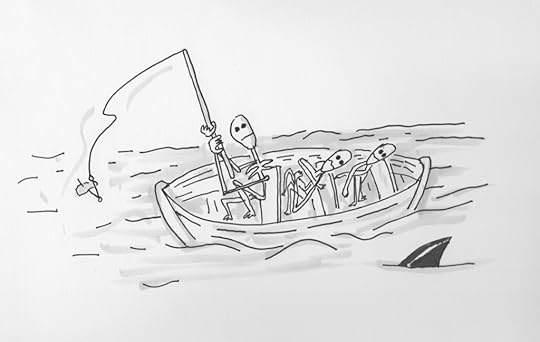
Apologies to self. Self as blogger. Self as self-marketer. Cynicism and inertia got the best of me. You see (analogy alert) I’ve been shipwrecked.
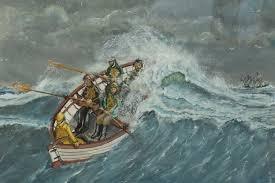
The image of people in a shipwrecked boat just came to me, so I’m going to go with it because it came from deep in my unconscious. I just realized writing this how shipwrecks and lifeboats are currently trending, that is conglomerating around the migrant crisis in the Mediterranean. So apologies. This isn’t that.
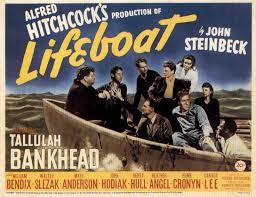
Here’s the image. Me and three other (guys, I guess–this isn’t Hitchcock’s 1944 lifeboat). Tallulah Bankhead, what a great name, eh? The guys are starving. We’ve been at sea a long time.
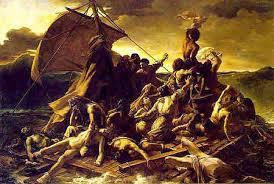
Here’s the marketing analogy. Marketing feels hopeless to me. Marketing is floating on a small boat on a great ocean. Yes, you want to be rescued. But also want food. Water and protection from the sun while you are waiting for the rescue (if in our analogy it’s called fame) it may never come. Statistically, you are likely to die at sea. But this is an analogy. In this analogy you need food. For some reason food works better because it leads to fishing, and fishing is a better analogy to marketing than opening your mouth in a downpour and getting rainwater.
You’re going to fish, but the best fishing pole you can improvise is an awful little thing. A wire hanger, a shoelace, a safety pin with a piece of shoe leather on it. Right? Awful! No fish will ever bite it. But here’s the thing. A fish might, as in could, bite it. It’s not impossible. What’s impossible is catching a fish without a fishing pole. Forget those flying fish! If they happen, they happen. They mess with the analogy. The lousy fishing pole gives you and your starving companions hope. Hope may keep you alive even if you never catch a fish. Without the lousy fishing pole representing staying alive while you await a boat to save you. You have no hope of not starving while you’re waiting. I know what you’re thinking.
But here’s the thing. A fish might, as in could, bite it. It’s not impossible. What’s impossible is catching a fish without a fishing pole. Forget those flying fish! If they happen, they happen. They mess with the analogy. The lousy fishing pole gives you and your starving companions hope. Hope may keep you alive even if you never catch a fish. Without the lousy fishing pole representing staying alive while you await a boat to save you. You have no hope of not starving while you’re waiting. I know what you’re thinking.

Where does cannibalism fit into this analogy? Let’s try it out. Like a Jungian dream analysis everyone in the boat is you, parts of you, if you will. Cannibalism as a self-metaphor is one part of your self-eating (killing and consuming) another part of you. Let’s say your cynical adult kills and eats your inner child. Ouch, right?
In the words of Donald Trump, “That’s bad. That’s a bad thing. A not-good thing.”
Besides eating this fish that you now caught miraculously by your horribly improvised fishing pole, now you turn to the issue of progress. Direction and movement. For some reason you discover an oar in the bottom of the boat that no one noticed because you were all too hungry.
 Now your marketing program has a bad fishing pole and one oar. Does one oar do anything? Might one oar make you go in circles? Maybe. But it beefs up the hope department. What if (how the young man dies in Into the Wild) the effort to row takes up more calories of energy than you take in? Starvation skeleton again.
Now your marketing program has a bad fishing pole and one oar. Does one oar do anything? Might one oar make you go in circles? Maybe. But it beefs up the hope department. What if (how the young man dies in Into the Wild) the effort to row takes up more calories of energy than you take in? Starvation skeleton again.
Do you need star navigation expertise for the oar to be valuable? A man of the active navigational channels is too much to ask for, so let’s not go there.
 What about an island in the distance? In the movie The Reef (2010) there is a great white shark in the water between you and the island. Now your boat is sinking (analogy relevance – the mortality conundrum)—you don’t have all the time in the world. We gave up on getting rescued, now we just want to get to the damn island!
What about an island in the distance? In the movie The Reef (2010) there is a great white shark in the water between you and the island. Now your boat is sinking (analogy relevance – the mortality conundrum)—you don’t have all the time in the world. We gave up on getting rescued, now we just want to get to the damn island!
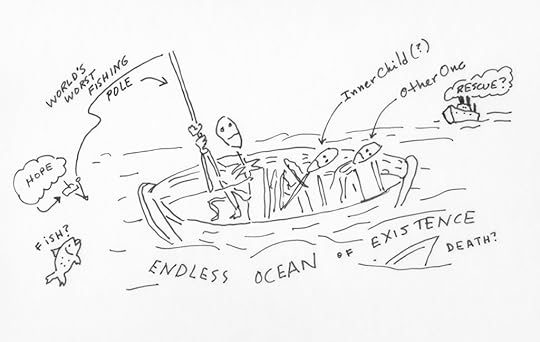
Okay, executive summary. The ocean is the hopelessness of making money from your dream. The thing they forgot to tell you in the Follow Your Bliss movement. The boat is you. You’re still alive but starving and on the verge of self-cannibalization. The fishing pole is the most meager effort (example, a blogpost like this) to “get your message out there,” and the oar is, I don’t know, maybe some idea of a direction helped, didn’t I? Are we going in circles? Can you tell?
The post Marketing as a Lifeboat appeared first on CB Murphy.
November 7, 2015
Collaborative Rewriting or Developmental Editing? notes on process
 I’m not a big one for “how to” articles mainly because I pretty much need to read them more than write them. However, I think it might be useful for some people to see how I am doing some collaborative editing.
I’m not a big one for “how to” articles mainly because I pretty much need to read them more than write them. However, I think it might be useful for some people to see how I am doing some collaborative editing.
First of all, as most writers know, there are all kinds of editors with their Venn Diagrams overlapping in all kinds of ways. To save time I am borrowing some definitions I found from the site http://www.romancerefined.com. I hope she doesn’t mind, I linked this to Rachel Daven Skinner. (See below my post)
My example of collaborative editing is working with a Developmental Editor. In my case he happens to be my son. I think it’s important to note that a developmental editor need not have the same skills as the other kinds of editors (especially Proofreaders). This level is about story. As long as I have been writing fiction I haven’t bumped into too many people who use developmental editors.
Why? Mainly because they are expensive, given the hours they need to put into your manuscript. (I’m guessing if they don’t need to put in hours you probably don’t need one.) Another issue is style. You need to find a developmental editor who “understands” where you are coming from. If you are doing anything experimental (and I am in this book) it’s even harder to find and/or trust someone to work with. You don’t want someone objecting to the whole concept you’re attempting. You want someone who “gets it” and likes it and thinks they can contribute to what they think you are trying to do.
We start with a draft in Word. Prior to this, I used Scrivener to compose the draft, but since I want to talk about collaboration, rewriting and developmental editing, https://en.wikipedia.org/wiki/Microsoft_Wordlet’s start here with the draft in Word. I like to put my draft in Word after Scrivener, as it feels like Scriv “birthed” this document and it is on it’s way to the next step–publication.
But–ah–the reader/developmental editor/collaborative re-writer reads it and says, “Oh, it’s great (etc.) but it needs some work.” I give the permission for him to work the piece and again, using Word (because their Markup feature is so excellent) he goes through the whole piece, commenting, cutting and improvising re-writes. In my case, my collaborator is more of a screenwriter in style so when he suggests large sections (or whole chapters) he writes what he calls a Skeleton and I “flesh it out” when I do the rewrite.
One “problem” is that it can be disconcerting if not depressing to get back a document highlighted and marked-up to a great extent even when some of the comments are “Great paragraph!”
What I found useful it to read all the comments, then embed them back into the text (vs having them stick out in the margin) and leave the highlights on. I think of this as a stripped down Word doc which I then import back into Scrivener.
Why do this? Well, you’re dealing with your emotions and at some level you’re always in fourth grade when you get a paper back “marked up” by the teacher. You need to get back to your current age by beating back the child (metaphorically speaking) and being the in-charge grown up artiste again. I found that one way to do this is to break up the chapter into sections, each a file of its own. Scrivener is great for this. The way I describe it is that it allows you to take seriously each section or chapter (even name them if you want) so that as you work on each one you feel you accomplished something. An analogy would be rock climbing. The chapter/section becomes the next handhold and really the only thing you need to think about, in fact, you better think about it very seriously of you will fall to your metaphorical death.
Once the chapter is broken down into paragraph/sections, rewritten, it is reconstructed (frankensteinianly wow now that’s an adverb) into a new chapter and pasted back into the Word document. Now if you’ve ever studied Flow, you know that it’s important to show measurable progress to be in it. Or as the famous dancer Trisha Brown once said, you compose “brick by brick.”
The last step is keeping track of all your changes. Many of you don’t have a problem with this, but in my case both of us suffer from ADD and live in fear of confusing, messing up, and/or flat out losing sections. It has happened and will happen again to me. I just try to minimize its lethality by “over-organizing” sections into folders into folders, ad infinitum.
FOUR LEVELS OF EDITING
Developmental Editing/ Book Doctoring
Developmental editing/etc. addresses issues at the whole book and chapter level. The focus is on overall execution of storytelling concepts (interesting characters, sound plot, balanced structure and pacing, etc.), addressing the skill of the writing itself, and possibly guiding revisions based on the intended publishing market.
Substantive Editing/ Content Editing/ Structural Editing/ Editorial Letter
Substantive editing is for a manuscript that has some scene, plot, or character issues but is in great shape as a whole, with quality writing and storytelling execution. If a multitude of the issues listed in this section are present in the majority of a manuscript to where massive rewrites are needed throughout, you need a developmental edit.
Copyediting
The focus is on elements such as syntax, best word choices, awkward phrasing, word and phrase overuse, variation of sentence construction, resolving ambiguities, “showing” vs. “telling,” beats interspersed with dialogue, ensuring dialogue is age appropriate and culturally accurate, amping up or toning down sex scenes, world-building details, setting scenes using all five senses, eliminating clichés, fact-checking elements that affect other details in the story, pointing out anachronistic expressions or references used in historicals, ensuring chapters break in the right spot and end with a hook, timeline consistency*, and more.
Proofreading
A proofreader checks nearly all of the same things that a copy editor does, but the difference is that the proofreader is looking for the hard-and-fast mistakes that were missed during the copyedit—because all copy editors do miss things—not seeking to improve the text.
The post Collaborative Rewriting or Developmental Editing? notes on process appeared first on CB Murphy.
October 30, 2015
HOW TO BECOME AN ARTIST
1. Divide your mind into three parts.
2. Part One is “the Child Mind”… curious, unembarrassable, stubborn… this part gets the ideas and wants to make things, indefatigable
3. Part Two is the “Pseudo Scientist”.. He’s not a real scientist but he likes to investigate things… bricoleur…alchemist…renaissance person… country gentleman/woman.. He’s the one who encourages Part One Child Mind to continue… like: How would it look if you did it that way?
4. Part Three of the mind is The Judge (or Judger). This fella you ask to sit it out. Sit over there until I ask you for help. The Judger is useful but not in the process of making the art.
5. Once the art is made you can ask The Judge his or her opinion. Usually, it is not helpful, but sometimes they can also be a Researcher and lead you to similar or related obsessions that the Child Mind may become fascinated with and the Pseudo Scientist can encourage him to make variations upon.
The post HOW TO BECOME AN ARTIST appeared first on CB Murphy.
October 2, 2015
snowflakes in a blizzard features End of Men
Snowflakes in a Blizzard literary blog features END OF MEN
The post snowflakes in a blizzard features End of Men appeared first on CB Murphy.
September 25, 2015
c.b. murphy’s mini-reviews of current cable COMEDY shows
Apologies for blogging lag. Mini-reviews of what I’m watching on cable.In the comedy category I am very excited about YOUR PRETTY FACE IS GOING TO HELL. It’s more or less Office Space with Devils. Cheap animation effects and unevenness of jokes is the proud hallmark of Adult Swim, but they do wha they do well. Very well.
I’m a bit of a latecomer to the outlandish RICK & MORTY animation series, also on Adult Swim. It basically takes a sort of Back to The Future kind of setup (cranky genius Grampa Rick) and enthusiastic sarcastic sidekick (grandson Morty) as they riff off of hit science fiction movies (e.g. Terminator) but make sure to add in the premise of the “infinite multiverse” in nearly every show. Rick can be a little grating, but he’s worth it, even with constant burbs and farts.
LOUIE. Everyone knows who Louis C. K. is now, but that doesn’t mean his show if for everyone. For some reason which I am still studying, both of my sons consider his show the pinnacle of television. It’s funny in an existentialist “I’m a fat sad guy” sort of way that can get old, but the inventiveness of characters, set-ups and editing keep you alert and on your toes. You never know when a scene will end, a character will come back or a random young actor will play “young Louie.” The inventiveness marks Louie as the work of a comic auteur, not unlike if Woody Allen (in his prime) made a thirty minute show every week. Better, though.
While NOT a comedy I want to mention MR ROBOT which as of this moment is probably my favorite show on television. Why? I think because it perhaps more than any other show it creates a unique world that you have to grab onto like a speeding train. They don’t wait for you. I compare it to HUMANS (the show about androids) but in this show you are “supposed” to relate to the “normal family” which is a bit tiresome. In MR ROBOT everyone is more or less a futuristic sort of person (surely alive and well today) and it’s hard to understand the motivations of anyone. While not laugh out loud funny, it is in some ways a comedy.
The post c.b. murphy’s mini-reviews of current cable COMEDY shows appeared first on CB Murphy.
July 7, 2015
Flash fiction: Thing in the Driveway Episode One
The idea of the Thing in the Driveway first came to Cole when he was taking out the trash on a moonless. He imagined his Thing wouldn’t be exactly in the driveway, but lurking in the forest to his right as he wheeled the forty gallon trash container to the gravel road. It was early fall and the deciduous trees that made up the bulk of the forest were denuded of leaves. All that remained were stumps and half-rotting trunks leaning against each other like drunks below a latticework of branches. He named his imaginary creature the Thing In The Driveway because that sounded better than the Thing In The Forest Near The Driveway.
Of course, it was a joke, a self-amusement created by an easily-bored mind not unlike teaching a child to identify animal shapes in cloudy skies. He knew it was a way to casually scare himself, but at the same time it allowed him to play anthropologist and speculate about the human brain and why it was so easily spooked. We were a kind of experiment of amused gods, he thought, conscious beings trying to figure themselves out.
Cole loved horror films, loved to be scared by fictional situations. Zombies, B-grade irrradiated beasts, occult reanimations, they were all good. All his siblings were same. Grasping for explanations of the group phenomenon only came up with something vaguely related to his father’s alcoholism that sent them cowering in the basement desperate and its flickering TV. It seemed they all felt relief to see people in worst situations than themselves running from any kind of monster.
No matter, popular culture vindicated his interest in fear: horror was burgeoning genre, not any more shameful than thrillers or romance, possibly less so given the box office.
But here’s the thing.
The very first time Cole saw the Thing in the Driveway, he didn’t feel he was making it up or conjuring it from his vast storehouse of mental horror scenes. From the very first time the Thing seemed to really be there—a lurking, ominous presence. It was only after he realized he was actually afraid of something that “wasn’t there” that he felt the need to take charge of it as if he was calling it forth for his amusement.

The post Flash fiction: Thing in the Driveway Episode One appeared first on CB Murphy.
June 8, 2015
Movies and Tv…for the YA reader
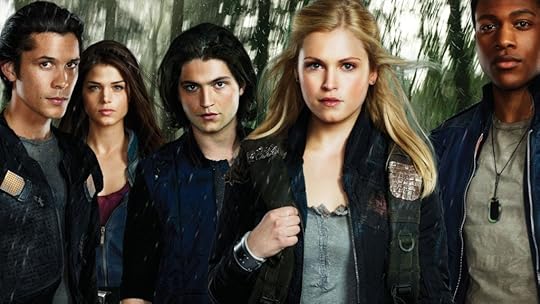
My son turned me onto the delightful Brit filmmaker Mike Leigh. Probably most famous for his recent MR TURNER, we also watched HAPPY-GO-LUCKY. The film has an interesting take on the Manic Pixie Dream Girl (MPDG) [from wiki] : a stock character type in films. Film critic Nathan Rabin, who coined the term after observing Kirsten Dunst‘s character in Elizabethtown(2005), describes the MPDG as “that bubbly, shallow cinematic creature that exists solely in the fevered imaginations of sensitive writer–directors to teach broodingly soulful young men to embrace life and its infinite mysteries and adventures.
In Happy-Go-Lucky Poppy is not an projection of male fantasies but a real person who doesn’t need men in her life to be “happy.” She chooses “happiness” of a sort without running away from the harder truths, but instead focusing on attitude, the classic “glass is half full” approach to life that has fallen a bit out of fashion especially with young people so aware of all the problems facing the world.
and SECRETS AND LIES. This movie is a fresh look at race relations but from an unconventional angle of a black woman (Brit, so not African American) who seeks her birth mother and finds out she’s a white woman.
I had low expectations for Maze Runner, perhaps a prejudice against so many YA novels brought to the screen with half-hearted even cynical direction. But this is a good film, full of action, and light on the “teen romance” that can be fun but oddly out of place in dystopian futures.
TV
the 100. Now to contradict what I just said about Maze Runner, the television show THE 100 (streaming now on netflix) does have one heck of a lot of “high school romance” in a dystopia, however (and this is its saving grace) it also has action and plenty of surprises in plot development. For example, you’re watching a scene unfold and you think, oh, I know how this kind of show ends this kind of scene, and it goes in completely the opposite direction. Refreshingly harsh if you will. Makes it easier to stomach the “hey, he’s my boyfriend” sort of banter while preparing for a Mad Max tribe to attack their settlement.
The post Movies and Tv…for the YA reader appeared first on CB Murphy.
April 29, 2015
It Follows film and the horrors of Detroit
It follows Detroit
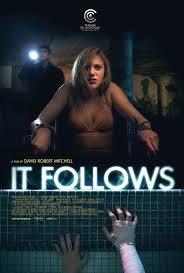
I had a great time with a buddy of mine who appreciates horror movies watching IT FOLLOWS.
The charm of the movie is partly in its amateurish messiness, which if it had been a bigger budget movie would have been worked out. Given its low budget indie quality I felt forgiving like I would if I knew the filmmaker or he was a relative.
It’s hard to put my finger on why I sensed it had been filmed in my native Detroit. I read later in a review something about “distinctive Detroit suburban architecture” but it was not the suburb I grew up in. Though the “core” of Detroit is crumbling on a massive scale the population of the area is still holding in a sort of donut shape around the city. Though IT FOLLOWS does eventually take advantage of Detroit’s “ruin porn” buildings it’s primarily about suburban kids in the first ring suburbs.
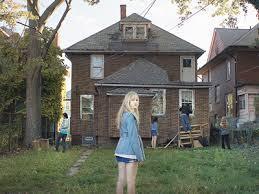
A sign fairly early on reads Twelve Mile Road and though there are myriad cities with numbered streets like this, when they featured the archaic Redford Theater (complete with functioning organ) it was verified this was (like the original EVIL DEAD) a production of southern Michigan. The city was also featured in Jim Jarmusch’s recent film ONLY LOVER LEFT ALIVE, where one reclusive vampire lives in Detroit and the more outgoing one chooses Tangiers. Nice city pair-up.
There are a few problems with the “it follows” spirit creature that latches onto you after sex with a stranger and inhabits apparently random physical beings as it relentless walks after you. Ostensibly to kill you. Even though it created some logic gaps (when does the creature change and why, etc) it did make you watch otherwise bucolic settings like a high school greenway for signs of this “something” walking directly towards you.
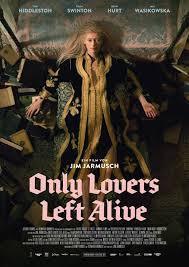
Shortly after I enjoyed this film, I was called back to my hometown for a funeral of a close relative. It had been years since I actually drove around Detroit and we stayed in a waterfront hotel that looked like something you’d find in a renovated industrial area of Milan. I kept thinking this quintessential area (the hotel) didn’t look like America but I had a hard time putting my finger on why.

But driving around to the church and funeral home took us all over the East Side. The devastation was shocking even though I thought I was prepared for it. Huge buildings looked burned out like they had been hit by incendiary bombs. Most of the stores as street level were boarded up even the second-generation stores that once featured southern food and hair straightening.
The neighborhoods that most moved me were the ones where you could see 60-80% of the people making an effort to maintain their small properties but then there would be one, two or more burned out and boarded up homes next to theirs. I got to thinking of it as an “ebola-like” real estate virus and tried to pick out homes that looked like they were sick. It must be a scary thing to live on a block with none of these houses then suddenly one goes to the dark side.
I don’t want to comment on the Baltimore riots. Enough people are talking about those. But I couldn’t help but think how few really good ideas for renewal come along and how few work once the area looks like a war zone. You have to get people to live there and feel safe and kids walking to school.
Sometimes it makes a horror movie seem relatively tame.
The post It Follows film and the horrors of Detroit appeared first on CB Murphy.
April 13, 2015
Surreal notes on AWP 2015 Minneapolis

Oh, there are a lot of people here. Some say 12,000. Some say 15,000. How many are published? How many are teachers? How many just love books?
Wow there are so many people here. That’s bad in a way, there are so many writers. Maybe there are more writers than readers? I heard someone say that. No, it’s a good thing, it shows how much interest there is in writing!
Tornadoes seem to be an image jumping forth from my psyche. Why a tornado on top of a tornado? Maybe because it’s so hard to write (tornado) and so hard to be published (second tornado).
Tornado dances between two ancient wisdom pyramids. One wisdom is the fact that we are addicted to stories and are stuck with this as a species. The second pyramid is probably referencing how old storytelling is. Older than the pyramids, really. Monkeys probably jabber stories. Look, a leopard! Flash fiction.

This is the Nike “Just do it” mother-of-all tornadoes. So just do it. Remember the old New Yorker joke: there are two doors, one says Heaven and one says Lecture on Heaven. There is a line for the lecture. No one walking toward the other door.
There are layers to this thing of being a writer, being creative. And no maps really. It’s a squirmy mass of information. Good Luck. Run for cover.
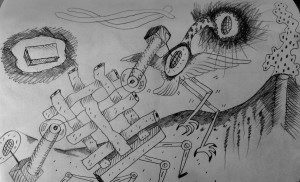
Some people are like walking headless birds on superlong legs with glowing something or others in their minds. Some are like intertwined woven sticks with mechanical legs. Yeah, we are all here for the lecture! There is room for all kinds!
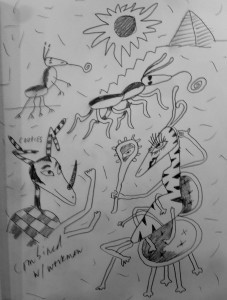
Ant-people are a good metaphor for something, but I’m not sure what. This is a picture of a queen ant and a male horned ant (with antlers). What does this mean? Are those drones in the background? How do you know if you’re a drone?
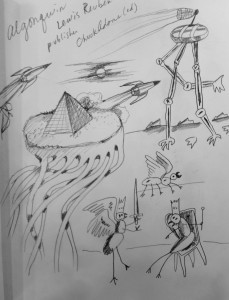
the ancient wisdom (symbolized by the pyramid) is on shaky legs, still the ant-queen and warrior determine what plot is, and that is essential. The angry guy says: Plot is character! What are you talking about? Beware of rocket ships!
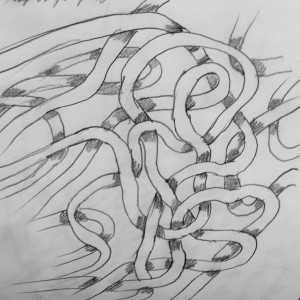
Celtic wisdom: it’s all intertwined and we are destined to be forgotten when our sun explodes in like billions of years. Or do we only have millions?
The post Surreal notes on AWP 2015 Minneapolis appeared first on CB Murphy.


